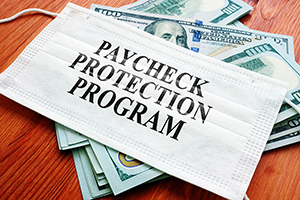
On June 5th, 2020, President Trump signed into law the Paycheck Protection Program Flexibility Act of 2020 (“Flexibility Act”). This legislation allows PPP loan recipients additional time and greater flexibility for the use of their PPP funds. This comes as a welcome revision to many PPP loan recipients concerned with forgiveness. We have outlined the highlights of the Flexibility Act below.
Covered Period
- Under the CARES Act, borrowers were allowed eight weeks to spend eligible PPP funds to qualify for loan forgiveness. The Flexibility Act enhances this by extending the covered period to the earlier of twenty-four weeks from loan disbursement or December 31, 2020. The Flexibility Act notes that current PPP borrowers can keep the original eight-week period, if desired.
Loan Forgiveness – Use of Funds
- The Flexibility Act also modifies one of the most critical PPP loan forgiveness components, the requirement to use at least 75% of loan proceeds on payroll to achieve maximum loan forgiveness. With the revision, eligible recipients are now required to use at least 60% of loan proceeds on payroll to qualify for loan forgiveness, with the remaining 40% eligible to be spent on qualified non-payroll costs.
Loan Forgiveness – Employee Rehiring and Salary Reduction
- In the original CARES Act legislation, borrowers were subject to a reduction in loan forgiveness if employee wages were reduced more than 25% or full-time equivalent employees were reduced. To avoid loan forgiveness reduction, borrowers had the opportunity to restore such reductions by June 30, 2020. The Flexibility Act has extended this restoration date to December 31, 2020.
- In addition, the Flexibility Act notes that the full-time equivalent employee reduction will not apply if the PPP recipient is able to document an inability to rehire individuals who were employees of the recipient on February 15, 2020 and an inability to hire similarly qualified employees for unfilled positions on or before December 31, 2020.
- Moreover, PPP loan forgiveness reduction will not apply if the PPP recipient is able to document an inability to return to the same level of business activity as of February 15, 2020 due to compliance with guidance issued by various health agencies related to COVID-19.
Deferral Period
- Under the CARES Act, payments on PPP loans were deferred for a minimum of six months. Under the Flexibility Act, these loans are now deferred until the date the loan forgiveness amount is provided to the lender. The Flexibility Act states, however, that if an eligible recipient fails to apply for loan forgiveness within ten months of the last day of the covered period, then the deferral period will end.
Loan Maturity
- Under the original PPP legislation in the CARES Act, the minimum PPP loan maturity carried a term of two years. With the Flexibility Act, the minimum maturity date has been extended to five years.
Payroll Tax Deferral
- The Flexibility Act also removes a key restriction the CARES Act placed on PPP loan forgiveness recipients – eligibility for payroll tax deferral. Under the Flexibility Act, PPP recipients are eligible to take advantage of the payroll tax deferral provided for in the CARES Act without being required to stop deferring the payment of those taxes if their PPP loan is forgiven.
We will continue to monitor changes and provide updates as any additional guidance on the Flexibility Act or other aspects of the PPP becomes available. Please continue to check our dedicated COVID-19 page for updated FAQs, articles and loan forgiveness info. As always, please reach out to the ML&R team with any questions.




